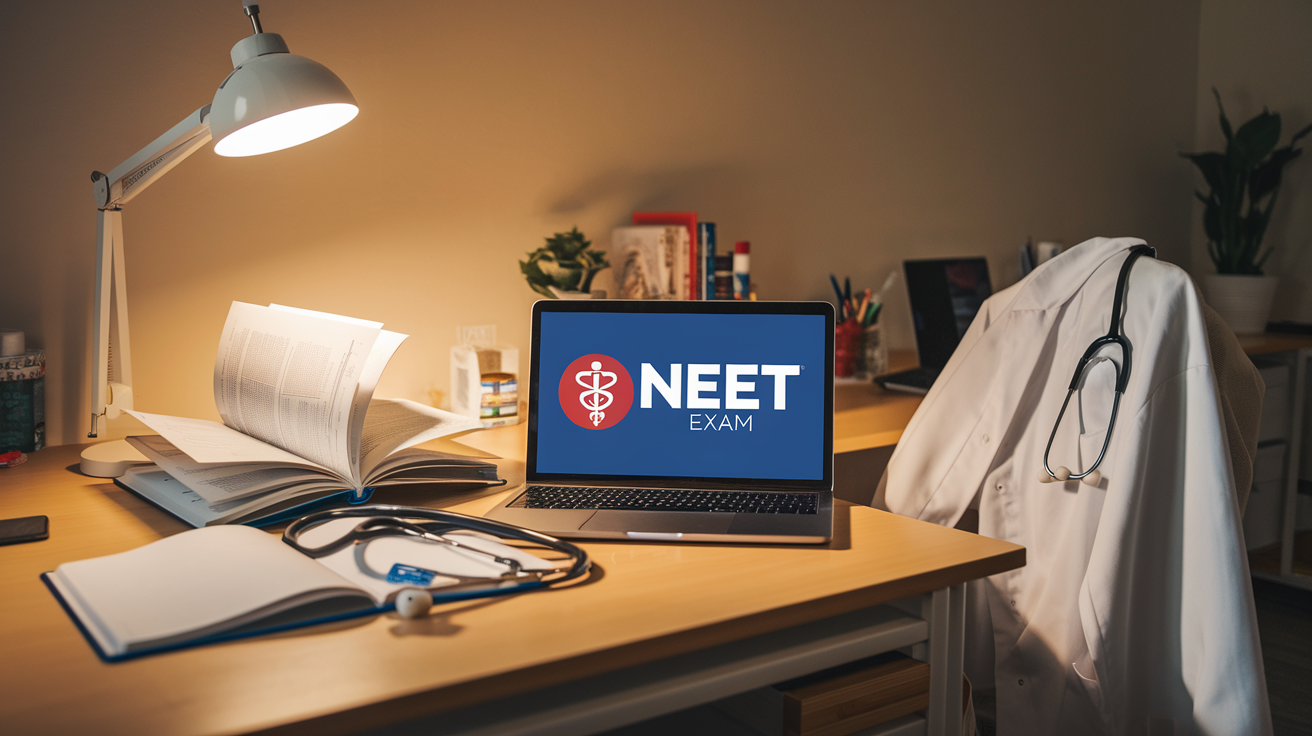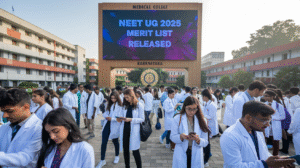Are you dreaming of becoming a doctor but worried about the competitive NEET exam? 🩺 We understand your concerns. The journey to securing an MBBS seat can be daunting, especially with the intense competition in entrance exams. But what if we told you there’s another way?
Direct admission for MBBS is a pathway that many aspiring medical students overlook. It offers a unique opportunity to bypass the traditional entrance exam route and secure your spot in a medical college. Whether you’re an Indian student or an NRI, direct admission could be your ticket to pursuing your medical dreams. But how does it work? What are the pros and cons? And most importantly, how can you make it happen?
In this comprehensive guide, we’ll walk you through everything you need to know about direct MBBS admission. From understanding the process and its advantages to exploring top medical colleges and alternative options, we’ve got you covered. Let’s dive in and discover how you can turn your medical aspirations into reality! 💪🏥
Understanding MBBS and NEET

A. MBBS course details and duration
When we talk about pursuing a career in medicine, the Bachelor of Medicine and Bachelor of Surgery (MBBS) degree is the foundation. In India, the MBBS program typically spans 5.5 years, divided into two main components:
- 4.5 years of academic study
- 1 year of compulsory rotatory internship
During the academic phase, we delve into various medical subjects, including:
- Anatomy
- Physiology
- Biochemistry
- Pathology
- Pharmacology
- Microbiology
- Community Medicine
The internship year provides hands-on clinical experience, allowing us to apply our theoretical knowledge in real-world medical settings.
B. NEET exam overview and importance
The National Eligibility cum Entrance Test (NEET-UG) is crucial for aspiring medical students in India. Here’s what we need to know:
- NEET is the sole national entrance examination for MBBS admissions
- It’s conducted by the National Testing Agency (NTA)
- The exam provides access to over 600 medical colleges, including 15 AIIMS and 2 JIPMER institutions
- NEET 2025 is scheduled for May 4, 2025
The exam structure is as follows:
| Subject | Number of Questions |
|---|---|
| Physics | 45 |
| Chemistry | 45 |
| Biology | 90 |
With over 1 lakh MBBS seats available, achieving a good NEET score is critical, especially for those aiming for government medical colleges due to their affordability compared to private institutions.
C. Eligibility criteria for MBBS admission
To be eligible for MBBS admission in India, we must meet the following criteria:
-
Educational Qualification:
- Pass 10+2 or equivalent examination
- Achieve a minimum of 50% marks in Physics, Chemistry, and Biology for General category (40% for SC/ST/OBC categories)
-
Age Requirement:
- Minimum age of 17 years
- Maximum age of 25 years (with relaxations for certain categories)
-
NEET Performance:
- Qualify NEET-UG exam
- Meet the cutoff scores:
- 50th percentile for general candidates
- 40th percentile for reserved categories
It’s important to note that the admission process is strictly merit-based. After qualifying NEET, we must register for counseling through the Medical Counselling Committee (MCC) portal. This involves filling in personal and NEET-related details and paying a counseling fee.
Now that we have covered the basics of MBBS and NEET, including course details, exam structure, and eligibility criteria, we’ll explore the Direct Admission Pathways for MBBS in the next section. This will provide us with insights into alternative routes for securing a spot in an MBBS program.
Direct Admission Pathways for MBBS

Now that we’ve covered the basics of MBBS and NEET, let’s explore the various pathways for direct admission to MBBS programs. These pathways offer alternative routes for aspiring medical students to pursue their dreams.
A. Management Quota Admissions
Management quota admissions represent a significant opportunity for students seeking direct entry into MBBS programs. We’ve found that 15% of seats in private medical colleges are reserved for Direct Admissions under Management Quotas. However, it’s crucial to note that even these admissions are contingent upon achieving the minimum qualifying scores in the NEET entrance exam.
To be eligible for Management Quota admissions, we must meet the following criteria:
- Completion of 12th grade with at least 50% in Physics, Chemistry, and Biology
- Participation in the NEET-UG exam
- Minimum age of 17 years by December 31 of the admission year
The NEET cutoff scores vary by category, and it’s essential to secure specific marks to be eligible for admission. Here’s a breakdown of the 2024 qualifying percentiles:
| Category | Minimum Percentile |
|---|---|
| General | 50th percentile |
| OBC/SC/ST | 40th percentile |
| PWD | 45th percentile |
The admission process involves several steps:
- Qualifying the NEET exam
- Registering for state-specific counseling
- Document verification
- Filling in choices for colleges
If seats remain unfilled after the initial rounds, mop-up rounds are conducted to fill the remaining vacancies.
It’s important to note that the fee structure for MBBS seats under Management Quota can be substantial, typically ranging between 20 to 45 lakhs per annum. Some institutions may even require a bank guarantee for course fees.
B. Institutional Quota Admissions
While our reference content doesn’t provide specific information about institutional quota admissions, we can infer that these are likely similar to management quota admissions but specific to certain institutions. These quotas may be available in deemed universities or other private institutions.
The Medical Counselling Committee (MCC) plays a crucial role in overseeing admissions, especially to deemed universities. For these admissions, we must register and pay a fee to participate in the counseling process.
C. NRI Quota Admissions
NRI quota admissions offer a unique pathway for Non-Resident Indians (NRIs), Overseas Citizens of India (OCIs), and Persons of Indian Origin (PIOs) to pursue MBBS in India. This quota is available in private medical colleges and even some government institutions.
Eligibility criteria for NRI quota admissions include:
- Being of Indian origin
- Completion of Class 10th and 12th from recognized institutions abroad
- Minimum of 60% in relevant subjects
- Possession of a valid NEET score
The admission process for NRI quota involves:
- Clearing the NEET exam
- Identifying private medical colleges offering NRI quota seats
- Submitting applications with required documentation
- Possibly participating in internal counseling or interviews
Notable institutions offering NRI quota seats include AIIMS Delhi, JIPMER Puducherry, and Amrita School of Medicine, among others. Several states such as Gujarat, Rajasthan, and Punjab also have government medical colleges offering NRI quota admissions.
It’s worth noting that NRI quota admissions are generally more expensive than regular seats and have specific eligibility requirements. However, they present an opportunity for Indian students abroad to access quality medical education in India with comparatively less competition.
With these direct admission pathways in mind, next, we’ll explore the advantages and disadvantages of pursuing direct admission for MBBS. This will help us better understand the implications of choosing these routes over traditional merit-based admissions.
Advantages and Disadvantages of Direct Admission

Now that we’ve explored the various pathways for direct admission to MBBS programs, let’s delve into the advantages and disadvantages of this approach. Understanding these factors will help you make an informed decision about your medical education journey.
Benefits of direct admission
Direct admission to MBBS programs offers several compelling advantages:
-
Expedited Entry: By choosing the direct admission route, we can bypass the competitive counseling process, allowing for a quicker start to our medical education.
-
Lower NEET Score Accommodation: This pathway provides an opportunity for students with lower NEET scores to still gain admission to medical colleges.
-
Alternative Quotas: Direct admission often utilizes management or NRI quotas, offering additional avenues for securing a seat in medical institutions.
-
Immediate Career Progression: Opting for direct admission can facilitate faster career advancement in the medical field.
-
Reduced Competitive Stress: The direct admission process can alleviate some of the stress associated with highly competitive traditional admission procedures.
-
Specialization Opportunities: This route may allow us to tailor our education paths from the outset, aligning our studies with specific interests or specializations.
Here’s a comparison of the benefits between direct admission and traditional admission:
| Aspect | Direct Admission | Traditional Admission |
|---|---|---|
| Admission Speed | Faster | Longer process |
| NEET Score Requirement | More flexible | Highly competitive |
| Stress Level | Potentially lower | Generally higher |
| Specialization Options | Earlier opportunities | Usually later in the program |
| Career Progression | Potentially faster | Standard pace |
Potential drawbacks to consider
While direct admission offers several advantages, it’s crucial to weigh these against potential drawbacks:
-
Higher Costs: Direct admission typically incurs significantly higher tuition fees, ranging from ₹5,00,000 to ₹25,00,000 annually, with additional expenses for development fees and other costs.
-
Limited Seat Availability: The number of seats available through direct admission is often limited, making the process competitive in its own right.
-
Quality Concerns: There may be concerns regarding the quality of education in some institutions offering direct admission, as the emphasis on quantity might compromise learning outcomes.
-
Financial Burden: The high costs associated with direct admission can place a substantial financial burden on students and their families.
-
Lack of Transparency: The admission process for direct entry can sometimes lack transparency, potentially leading to exploitation by agents or intermediaries.
-
Reduced Competitive Edge: The ease of entry through direct admission might impact future career opportunities, as graduates may face challenges in highly competitive job markets.
-
Accreditation Issues: Choosing an institution without proper accreditation could jeopardize a graduate’s professional standing in the future.
-
Limited Exposure: Direct admission might limit exposure to diverse medical experiences, which are essential for developing comprehensive expertise.
It’s important to carefully consider these factors and weigh them against our long-term career goals and educational aspirations. By thoroughly researching colleges, meeting eligibility requirements, and evaluating the financial implications, we can make an informed decision about whether direct admission is the right path for our MBBS journey.
With these advantages and disadvantages in mind, next, we’ll explore the specific steps to secure direct MBBS admission, providing a practical guide for those considering this pathway.
Steps to Secure Direct MBBS Admission

Now that we’ve explored the advantages and disadvantages of direct admission for MBBS, let’s delve into the practical steps to secure your spot in a medical college through this route.
A. Researching eligible colleges
We understand that finding the right college is crucial for your medical education. To begin your journey:
- Compile a list of private medical colleges offering direct admission through management or NRI quotas.
- Focus on institutions that align with your academic goals and financial capabilities.
- Prioritize colleges based on factors such as reputation, facilities, and location.
It’s essential to note that even for direct admission, we must meet certain eligibility criteria:
- Completion of 10+2 or equivalent with Physics, Chemistry, Biology, and English
- Minimum aggregate score of 50% in these subjects
- NEET-UG qualification (yes, it’s still required for direct admission!)
- Age requirement of at least 17 years
B. Application process and document requirements
Once we’ve identified potential colleges, the next step is to navigate the application process:
- Contact the admission offices of chosen colleges for detailed information.
- Obtain and complete the application form, ensuring accuracy in all details.
- Prepare the following essential documents:
| Document Type | Details |
|---|---|
| Academic Records | NEET-UG scorecard, 10th and 12th mark sheets and certificates |
| Personal Information | Birth certificate, ID proof (Aadhaar, PAN, or passport) |
| Additional Requirements | Passport-sized photographs, medical fitness certificate |
| Category Certificate | If applicable |
- Be prepared for potential interviews or additional assessments, as some colleges may require these.
We must emphasize the importance of thorough research and prompt communication with college admission offices. This proactive approach can significantly streamline our application process and increase our chances of securing a seat.
C. Fee structure and payment
Understanding and planning for the financial aspect of direct admission is crucial:
-
Inquire about the complete fee structure, including:
- Tuition fees
- Development fees
- Any additional charges
-
Be aware that direct admission through management or NRI quotas often involves higher fees compared to merit-based admissions.
-
Clarify the payment schedule and accepted methods of payment with the college.
-
Upon successful document verification and fee payment, we’ll receive an official admission letter from the college.
It’s worth noting that while direct admission fees are generally higher, they offer us the advantage of securing a seat without facing the intense competition associated with merit-based counseling. This pathway also provides more flexible admission criteria and saves us time by eliminating the long wait for counseling rounds.
With these steps in mind, we’re now equipped to navigate the direct admission process for MBBS. However, it’s important to remember that this isn’t the only path to achieving our medical aspirations. In the next section, we’ll explore alternative options for MBBS aspirants, providing a comprehensive view of the various routes available to us in pursuing our medical education goals.
Alternative Options for MBBS Aspirants

Now that we’ve covered the steps to secure direct MBBS admission, let’s explore alternative options for MBBS aspirants who may be looking for different pathways or facing challenges in the direct admission process.
State-wise counseling processes
We understand that navigating the MBBS admission landscape can be complex, especially when considering state-specific procedures. Each state in India conducts its own counseling process for MBBS admissions, which can be an excellent alternative for students who didn’t secure direct admission. Here’s what we need to know:
- State counseling is typically based on NEET scores
- The process may vary from state to state
- Candidates usually need to register for the state-specific counseling
It’s crucial to research and understand the specific requirements and deadlines for each state we’re interested in. This approach can increase our chances of securing an MBBS seat, especially if we’re open to studying in different regions of India.
Pursuing MBBS abroad
For those of us looking beyond Indian borders, studying MBBS abroad can be an attractive option. Here are some key points to consider:
- Many countries offer MBBS programs in English
- Some programs may not require NEET scores
- Admission processes and costs can vary significantly
| Advantages | Considerations |
|---|---|
| Exposure to international healthcare systems | Higher costs in some countries |
| Potential for global career opportunities | Need to adapt to a new culture and environment |
| Possible easier admission process | May require additional exams for practicing in India |
While pursuing MBBS abroad can be exciting, we must carefully evaluate the program’s recognition in India and the additional steps required to practice medicine upon return.
Options for lower NEET scores
If our NEET scores aren’t as high as we hoped, we shouldn’t lose heart. There are several alternative paths we can explore in the medical field:
-
Alternative Medicine: We can consider programs in Ayurveda, Homeopathy, Naturopathy, or Unani. These courses typically last 4.5 to 5.5 years and require NEET qualification. Institutions like OPJS University and the National Institute of Siddha offer these programs with fees ranging from INR 53,475 to INR 3,00,000.
-
Paramedical Courses: Options like BSc Nursing and BPT (Bachelor of Physiotherapy) are cost-effective alternatives lasting 3 to 4 years. Top colleges include AIIMS Delhi and PGIMER Chandigarh, with fees from INR 1,685 to INR 79,800.
-
Pharmacy: A 4-year bachelor’s degree in pharmacy is another option. Jamia Hamdard University and Panjab University are notable institutions, with fees between INR 29,400 and INR 90,500.
-
Biotechnology: This 3-year program combines technology and life sciences. Admission is based on entrance exams like NPAT. Leading institutions include Loyola College and Fergusson College, with fees ranging from INR 11,135 to INR 1,02,300.
These alternatives can provide us with valuable skills and knowledge in the healthcare sector, opening up diverse career opportunities.
With these alternative options in mind, we’ll next explore how to prepare for MBBS admission, ensuring we’re well-equipped for whichever path we choose to pursue in the medical field.
Preparing for MBBS Admission

Now that we’ve explored alternative options for MBBS aspirants, let’s focus on preparing for MBBS admission. This crucial step can make all the difference in securing your place in a medical program.
NEET preparation strategies
We understand that preparing for the NEET exam is a critical part of your MBBS journey. To excel in this crucial test, we recommend the following strategies:
-
Understand the exam structure:
- Familiarize yourself with the syllabus
- Study question formats
- Be aware of time constraints
-
Create a realistic study schedule:
- Break down the syllabus into manageable sections
- Allocate specific study times for each topic
- Incorporate regular breaks to avoid burnout
-
Master fundamental subjects:
- Focus on Physics, Chemistry, and Biology
- Build a solid foundation in these core areas
| Subject | Key Focus Areas | Study Tips |
|---|---|---|
| Physics | Mechanics, Thermodynamics, Optics | Solve numerical problems, understand concepts |
| Chemistry | Organic, Inorganic, Physical Chemistry | Memorize reactions, practice equations |
| Biology | Human Physiology, Genetics, Ecology | Use diagrams, learn terminology |
Important documents to maintain
As we prepare for the MBBS admission process, it’s crucial to keep our documentation in order. Here’s a list of essential documents you should maintain:
- Official transcripts
- NEET scores (once available)
- Personal statement
- Letters of recommendation (3-5)
- Records of extracurricular activities
- Application fee receipts
We recommend starting early on your personal statement. This document should:
- Share personal experiences that influenced your decision to pursue medicine
- Be authentic and reflective of your journey
- Be carefully proofread and refined
- Include feedback from mentors or trusted advisors
Understanding the counseling process
The counseling process is a vital step in securing your MBBS admission. We’ll guide you through what to expect:
-
Application submission:
- Submit via the designated application service
- Typically done in May or June for the following year’s enrollment
-
Interview preparation:
- Research the medical schools you’re applying to
- Practice responses to common interview questions
- Highlight relevant experiences
- Dress professionally
- Maintain composure during the interview
-
Timeline overview:
- Interviews usually scheduled between August and March
- Admission decisions communicated from January to May
We can’t stress enough the importance of thorough preparation for each stage of this process. Your dedication and genuine passion for medicine will be key factors in standing out among other applicants.
As we move forward, we’ll explore the top medical colleges for direct admission, which will give you a clear picture of where to focus your efforts. Remember, the admission process may be demanding, but with careful planning and preparation, it’s certainly attainable. We’re here to support you every step of the way in your journey to becoming a medical professional.
Top Medical Colleges for Direct Admission

Now that we’ve covered how to prepare for MBBS admission, let’s explore the top medical colleges that offer direct admission opportunities. This information will be crucial for those considering alternative pathways to pursue their medical education.
A. Deemed universities accepting direct admissions
We’ve compiled a list of some of the top deemed private medical colleges in India that accept direct admissions:
- Manipal University, Karnataka
- DY Patil University, Maharashtra
- SRM University, Tamil Nadu
- Jamia Hamdard University, Delhi
- KIIT University, Odisha
These institutions often have management quotas that allow students to secure seats based on their Class 12 performance and college-specific entrance exams. It’s important to note that while these universities offer direct admission, they still require candidates to have appeared for NEET-UG as per regulatory guidelines.
B. State-wise private medical colleges
We’ve observed that private medical colleges across different states also provide direct admission options. Here’s a brief overview of some states with notable private medical colleges:
| State | Notable Private Medical Colleges |
|---|---|
| Maharashtra | Bharati Vidyapeeth, Pune; MGM Medical College, Navi Mumbai |
| Karnataka | MS Ramaiah Medical College, Bengaluru; KS Hegde Medical Academy, Mangalore |
| Tamil Nadu | PSG Institute of Medical Sciences, Coimbatore; Chettinad Hospital and Research Institute, Chennai |
| Gujarat | Pramukhswami Medical College, Anand; GMERS Medical College, Gandhinagar |
| Uttar Pradesh | Sharda University, Greater Noida; Teerthanker Mahaveer Medical College, Moradabad |
These colleges often have their own admission processes, which may include management quota seats and institutional preference quotas.
C. Admission criteria variations by institution
We’ve found that admission criteria can vary significantly between institutions offering direct MBBS admissions. However, some common elements include:
-
NEET-UG appearance: Most institutions require candidates to have appeared for NEET-UG, even if they’re not using the score for admission.
-
Age requirement: Candidates must typically be at least 17 years old at the time of admission.
-
Academic performance: A minimum of 50% marks in Physics, Chemistry, and Biology in Class 12 is usually required.
-
Entrance exams: Some colleges conduct their own entrance exams for management quota admissions.
-
Interview process: Many institutions include a personal interview as part of their selection process.
We’ve noticed that the admission criteria can also depend on the type of seat being offered:
- Management quota seats: These often have more flexible criteria but come with higher fees.
- NRI quota seats: Some colleges reserve seats for Non-Resident Indians, with specific eligibility requirements.
- Institutional preference quota: This may give preference to candidates from particular backgrounds or regions.
It’s crucial to remember that while direct admissions offer an alternative pathway, they often come with higher fees compared to seats secured through NEET counseling. The fees can range from Rs. 71,000 to Rs. 2,100,000 per year, depending on the institution and quota.
We strongly advise prospective students to thoroughly research each institution’s specific admission criteria, fee structure, and reputation before applying. It’s also important to consider the potential career opportunities post-graduation, as many renowned hospitals and healthcare companies actively recruit from these institutions.

Navigating the path to direct MBBS admission can be complex, but with the right information and approach, it’s an achievable goal. We’ve explored various aspects of this process, from understanding NEET requirements to evaluating direct admission pathways and preparing for medical school. While direct admission offers advantages like increased chances of securing a seat, it’s crucial to weigh these against potential drawbacks such as higher fees and limited college choices.
We encourage aspiring medical students to thoroughly research their options, considering both domestic and international opportunities. Whether you choose to pursue direct admission through management quotas or explore alternatives like studying abroad, remember that your NEET performance remains a critical factor. Stay focused on your preparation, maintain all necessary documentation, and don’t hesitate to reach out to specific colleges or consultancies for the most up-to-date information. Your journey to becoming a medical professional starts with making informed decisions, and we hope this guide has equipped you with the knowledge to take your first steps confidently.
💬 Instant WhatsApp Support
Get real-time assistance for urgent queries about applications & deadlines
Average response time: 15 minutes
📞 One-on-One Consultation
Speak directly with our senior admission counselors for comprehensive guidance
Available Mon-Sat: 9 AM - 7 PM IST
Sunday: 10 AM - 4 PM IST
📩 Detailed Inquiry Form
Share your details and our experts will craft a personalized admission strategy






